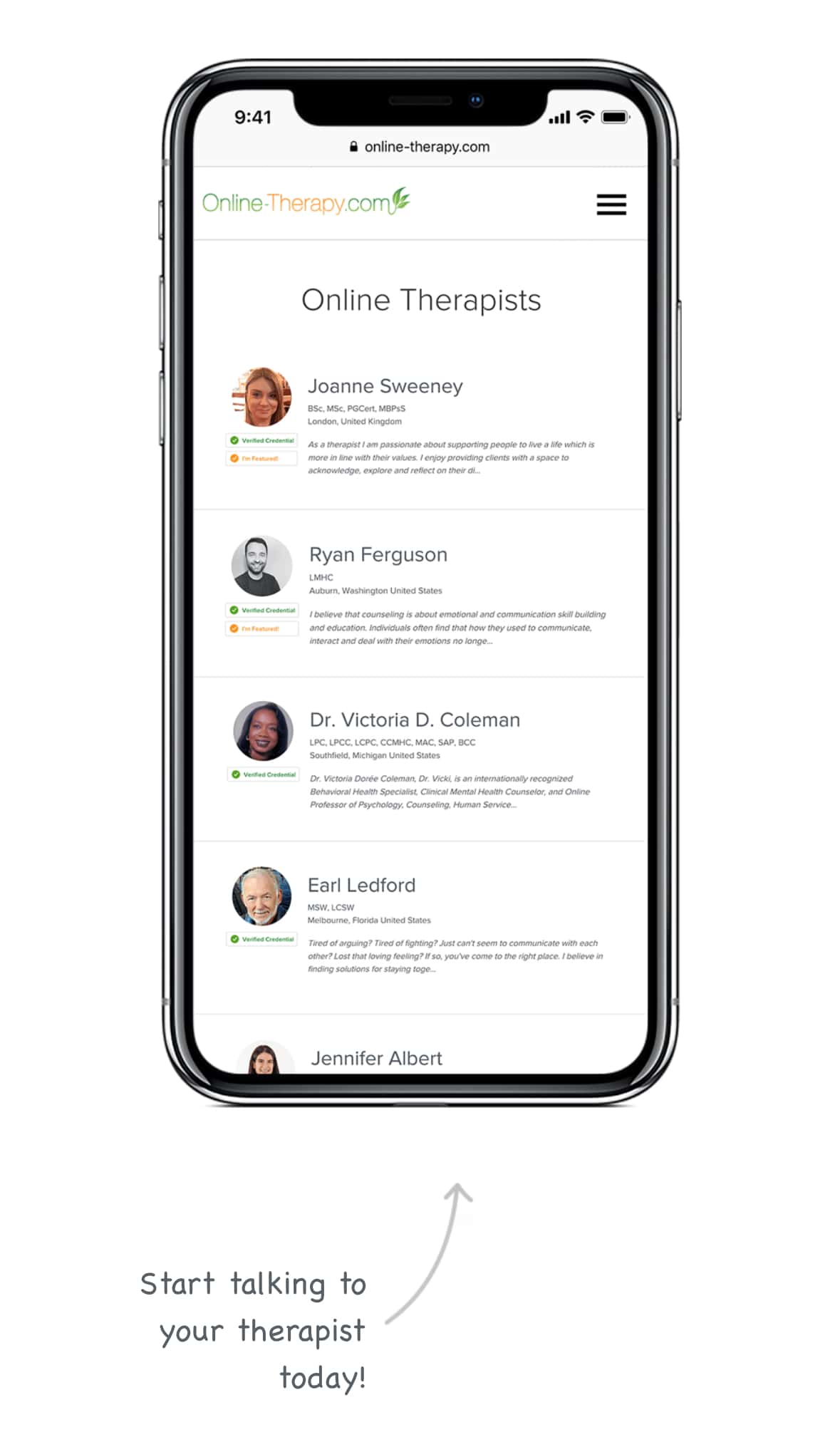What is Harm OCD? Understanding Signs & Symptoms
Medically Reviewed By – Juliet Gustafson, LMSW

Step right up, folks! Welcome to the wacky world of Harm OCD, where intrusive thoughts and irrational fears take center stage.
Brace yourself for a mind-bending spectacle of worrying about accidental harm and performing compulsions that would make even the most skilled circus performer jealous.
But fear not! With the right treatment and a sprinkle of humor, we can tame this mischievous beast and reclaim our worry-free lives.
So sit back, relax, and get ready for a wild ride through Harm OCD with a smile on your face!
“What helps me when I feel scared about being thought of in this way, is recognizing these thoughts and OCD as a separate entity from myself“

🎁 Special Offer: 🎁 When you use our affiliate link, you’ll receive an exclusive 20% discount on Online-Therapy.com services!
Don’t miss this opportunity to invest in yourself and unlock your full potential. Start your journey to mental wellness today!
Say yes to a brighter, happier future with Online-Therapy.com!
20% discount on Online-Therapy.com services
Are you ready to take control of your mental well-being and embark on a journey towards a happier, healthier you? Look no further than Online-Therapy.com!
Experience a transformation in your mental health with the following benefits:
- Convenient & Confidential: Online-Therapy.com provides a safe and private platform for therapy sessions. Say goodbye to the stress of in-person appointments.
- Comprehensive Resources: Access a treasure trove of therapeutic resources, including worksheets, journals, and interactive tools, all designed to help you grow and heal.
- Certified Professionals: Connect with experienced and licensed therapists who are dedicated to your progress and well-being.
- Tailored Approach: Online-Therapy.com offers personalized plans designed to suit your specific needs, ensuring you receive the support you deserve.
What is Harm OCD?
Harm OCD, also known as Harm Obsessions or Harm-related Obsessive-Compulsive Disorder, is a specific subtype of obsessive-compulsive disorder (OCD).
Harm OCD symptoms are characterized by intrusive, distressing, and unwanted thoughts, images, or urges related to causing harm to oneself or others. These aggressive thoughts are typically accompanied by significant anxiety and fear.
In Harm OCD, individuals experience recurrent and intrusive thoughts or mental images of committing acts of violence (acting violently), aggression, or causing harm to themselves or others. Such thoughts are often contrary to their true desires and values, which causes distress and confusion.
“I started to deal with Harm OCD when I was around 10 years old. I had these very violent thoughts of stabbing my family members with a knife; in fact, I didn’t touch a knife for 5 years, out of the fear I would kill someone I loved”.
What are you waiting for? Download your FREE OCD Worksheets Now!
What Causes Harm OCD?
The exact causes of Harm OCD, like other subtypes of obsessive-compulsive disorder (OCD), are not fully understood. However, research suggests that a combination of biological, genetic, psychological, and environmental factors contribute to its development.
- Biological factors: There is evidence to suggest that imbalances in certain brain chemicals (neurotransmitters) like serotonin may be involved in the development of OCD. Additionally, abnormalities in brain regions associated with decision-making, impulse control, and fear response have been observed in individuals with OCD.
- Genetic factors: OCD and its subtypes, tend to run in families, indicating a genetic component.
- Environmental factors: Traumatic events, chronic stress, or significant life changes can contribute to the onset or exacerbation of OCD symptoms.
- Cognitive factors: Harm OCD is often associated with cognitive distortions, such as catastrophic thinking, overestimating the likelihood of harm, and difficulty tolerating uncertainty.
- Learned behaviors: In some cases, individuals may develop such symptoms as a result of learned behaviors or associations.
Related Article(s) – 4 Fundamental Causes Of OCD
What Are The Signs & Symptoms of Harm OCD?
Intrusive thoughts: Individuals experience intrusive thoughts that are often violent, graphic, or disturbing in nature. These harm ocd thoughts can be sudden, intrusive, and unwelcome, causing significant distress.
They can involve images or mental scenarios of violent acts to oneself or others, such as obsessive thoughts of stabbing, pushing someone, or being responsible for accidents.
The thoughts are typically repetitive and difficult to control by a harm ocd sufferer.
Anxiety and distress: These symptoms are characterized by intense anxiety and distress. The intrusive thoughts trigger fear and worry, leading to heightened anxiety.
Sufferers may feel a sense of impending danger or a need to prevent unwanted violent thoughts. The anxiety can be accompanied by physical symptoms like increased heart rate, sweating, trembling, and involuntary impulse.
Doubt and uncertainty: Sufferers experience doubt and uncertainty about their violent thoughts and intentions.This doubt can lead to heightened anxiety and self-doubt, contributing to the cycle of obsessions and compulsive behavior.
Compulsive behaviors: To manage the distress caused by the intrusive thoughts, sufferers often engage in compulsive behaviors. These behaviors are aimed at reducing anxiety, preventing violent thoughts, or seeking reassurance.
Avoidance: Patients may engage in avoidance behaviors as a way to prevent harm or alleviate anxiety. They may avoid certain places, people, or objects they associate with potential harm.
They may avoid being around vulnerable individuals, such as children, or avoid situations where they fear they may lose control.
Avoidance behaviors can significantly impact daily life and restrict one’s activities, social interactions and self confidence. An example of this would include avoiding other sharp objects.
Distress and interference: Harm OCD can cause significant distress and interfere with various aspects of an individual’s life.
Common Obsessions
My thoughts soon went from stabbing someone, to strangling someone, to slitting my wrists, to overdosing on my medications and causing irreparable damage to myself and my family.
Some common harm OCD obsessions include:
Fear of intentionally harming oneself or others: This may involve intrusive thoughts or images of committing acts of violence, such as stabbing, pushing someone off a ledge, or causing accidents.
Harm OCD sufferers often have a strong aversion to violence and find these thoughts deeply distressing.
Fear of being responsible for accidents or harm: Patients may experience violent intrusive thoughts that they will cause unintentional harm to others, such as through negligence, carelessness and overwhelming responsibility.
They may fear that they will forget to lock doors, leave dangerous objects within reach, or fail to take necessary safety precautions.
Fear of acting on aggressive or taboo thoughts: Patients may experience intrusive thoughts or physical sensations that go against their moral values or societal norms.
Hyperawareness of potential harm: Patients may become hyper-focused on the potential dangers and risks in their environment.
They may constantly scan their surroundings for potential hazards, such as sharp objects, harmful substances, or potentially dangerous situations.
It is important to note that having harm-related obsessions does not mean that a person with OCD is violent or dangerous. These obsessions are a product of the disorder and are typically inconsistent with the individual’s true character and values.
Related Article(s) – What are Obsessions in OCD?
Common Compulsions
Checking and reassurance seeking: This involves repeatedly checking to ensure that no inflicting harm has been caused or that potential dangers have been mitigated.
Mental rituals: These are internal compulsions that involve repetitive mental processes aimed at neutralizing or preventing harm.
Avoidance behaviors: Sufferers may avoid certain situations, places, or people they associate with harm or that trigger their obsessions.
This may involve avoiding sharp objects, staying away from vulnerable individuals (such as children), or avoiding situations where they fear they may lose control or act on their obsessions.
Repeatedly seeking reassurance: This compulsion involves repeatedly seeking reassurance from others, such as loved ones or professionals, to alleviate anxiety and gain confirmation that no violent act has been caused.
Compulsive confessing: Some individuals with Harm OCD feel compelled to confess their intrusive thoughts or fears to others, often out of a strong need to alleviate guilt or seek reassurance.
They may disclose their distressing thoughts, fears, or concerns, even though they know these thoughts are irrational or inconsistent with their true desires.
Physically avoiding or neutralizing triggers: This compulsion involves physically avoiding or neutralizing potential triggers of harm.
It’s important to note that while engaging in these compulsions may provide temporary relief, they actually reinforce the obsessions and maintain the OCD cycle.
Related Article(s) – What are Compulsions in OCD?
Can You Treat Harm OCD?

Yes, Harm OCD can be effectively treated. The most common and evidence-based treatment for Harm OCD, as well as other OCD subtypes is a combination of cognitive-behavioral therapy (CBT) and, in some cases, medication.
Cognitive-Behavioral Therapy (CBT): CBT is a type of therapy that focuses on identifying and challenging unhelpful thoughts and behaviors.
Exposure and Response Prevention (ERP): The golden standard to treat ocd. ERP involves gradually exposing individuals to situations, thoughts, or images that trigger their obsessions while refraining from engaging in the corresponding compulsive behaviors.
By repeatedly facing their fears (called exposure) without engaging in avoidance or rituals, individuals can learn that their anxiety naturally diminishes over time, reducing the power of the obsessions.
“When I was in a partial hospitalization program for OCD, I started doing exposures surrounding knives, so I would be able to use them again”.
Cognitive Restructuring: Mindfulness based CBT technique helps individuals identify and challenge disturbing thought and beliefs related to their Harm OCD. By examining the evidence for and against their fears, individuals can develop more balanced and rational ways of thinking about their obsessions.
Medication: In some cases, medication may be prescribed to help manage the symptoms of Harm OCD. Selective serotonin reuptake inhibitors (SSRIs) are commonly used as a first-line medication for OCD.
SSRIs help regulate serotonin levels in the brain, which can reduce the intensity of obsessions and compulsions.
Support and Education: Seeking support from OCD therapists can provide valuable guidance and reassurance throughout the treatment process. This also may include joining a support group and including family members .
It is important to remember that treatment for Harm OCD is highly individualized, and the specific approach may vary based on the severity of symptoms and individual needs.
Related Article(s) – Planning Care For A Patient With OCD
How To Find Help
Finding help for Harm OCD involves reaching out to a qualified mental health professional who specialize in the treatment of OCD.
“I also did this with driving and my fear of hitting a pedestrian”
- Seek a Mental Health Professional: Start by finding mental health professionals who have experience and expertise in treating OCD, specifically Harm OCD. Look for psychologists, psychiatrists, or therapists who specialize in cognitive-behavioral therapy (CBT) or exposure and response prevention (ERP), which are effective treatments for OCD.
- Ask for Referrals: Seek recommendations from trusted sources, such as your primary care physician, other mental health professionals you may know, or support groups for OCD. They may be able to provide referrals to professionals who have experience in treating Harm OCD.
- Research Online Directories: Utilize online directories to find mental health professionals in your area who specialize in OCD treatment. Websites like Psychology Today, the International OCD Foundation (IOCDF) directory, or local mental health organizations may provide listings of professionals with expertise in OCD.
- Contact Support Groups or OCD Organizations: Reach out to local or online support groups for OCD or Harm OCD. Members of these groups may be able to provide recommendations or share their own experiences with finding effective treatment providers.
“I remember learning that one of my friends from the partial hospitalization program I was in was doing knife exposures as well, and not only was it comforting to know I wasn’t alone“
Related Article(s) – What Will Happen if OCD is Left Untreated?
What To Expect In Recovery
In the treatment of Harm OCD, the primary goal is to reduce the distressing symptoms and help individuals develop more adaptive ways of managing their obsessions and compulsions.
Here’s what you can generally expect in Harm OCD treatment:
- Assessment and diagnosis: The first step in treatment is a comprehensive assessment conducted by a mental health professional, such as a psychologist or psychiatrist. They will evaluate your symptoms, discuss your concerns, and determine if Harm OCD is present. This process helps to create an individualized treatment plan.
- Psycho-education: Psycho-education is an essential component of OCD treatment. It involves learning about the nature of Harm OCD, its causes, and the underlying mechanisms that contribute to the obsessions and compulsions.
- Exposure and response prevention (ERP): ERP is the gold standard treatment for OCD, including Harm OCD. It involves gradually and systematically exposing yourself to situations, thoughts, or images that trigger your obsessions, while resisting the urge to engage in the corresponding compulsions. This process helps to weaken the anxiety response and reduce the need to engage in compulsive behaviors.
- Mindfulness and acceptance-based strategies: Mindfulness techniques can help individuals with Harm OCD observe their thoughts and emotions without judgment or reacting to them. Acceptance-based strategies encourage accepting the presence of intrusive thoughts without trying to eliminate or suppress them, ultimately reducing their impact.
- Medication (if necessary): In some cases, medication, such as selective serotonin reuptake inhibitors (SSRIs), may be prescribed to help manage OCD symptoms. Medication can be used in conjunction with therapy or as a standalone treatment, depending on the individual’s specific needs.
Remember that each person’s treatment journey is unique, and the specific strategies and duration of treatment will vary.
Related Article(s) – Is OCD Treatable Without Medication?

🎁 Special Offer: 🎁 When you use our affiliate link, you’ll receive an exclusive 20% discount on Online-Therapy.com services!
Don’t miss this opportunity to invest in yourself and unlock your full potential. Start your journey to mental wellness today!
Say yes to a brighter, happier future with Online-Therapy.com!
20% discount on Online-Therapy.com services
Are you ready to take control of your mental well-being and embark on a journey towards a happier, healthier you? Look no further than Online-Therapy.com!
Experience a transformation in your mental health with the following benefits:
- Convenient & Confidential: Online-Therapy.com provides a safe and private platform for therapy sessions. Say goodbye to the stress of in-person appointments.
- Comprehensive Resources: Access a treasure trove of therapeutic resources, including worksheets, journals, and interactive tools, all designed to help you grow and heal.
- Certified Professionals: Connect with experienced and licensed therapists who are dedicated to your progress and well-being.
- Tailored Approach: Online-Therapy.com offers personalized plans designed to suit your specific needs, ensuring you receive the support you deserve.
Final Thoughts on Harm OCD
In conclusion, Harm OCD is a challenging condition characterized by intrusive thoughts, anxiety, and compulsive behaviors. It can significantly impact daily life and well-being.
However, with proper diagnosis and treatment, including cognitive-behavioral therapy (CBT) and, in some cases, medication, individuals with Harm OCD can experience relief from their symptoms.
Remember, seeking help from qualified professionals and finding support from loved ones are crucial steps towards managing Harm OCD and living a fulfilling life. You are not defined by your intrusive thoughts, and there is hope for a brighter future.